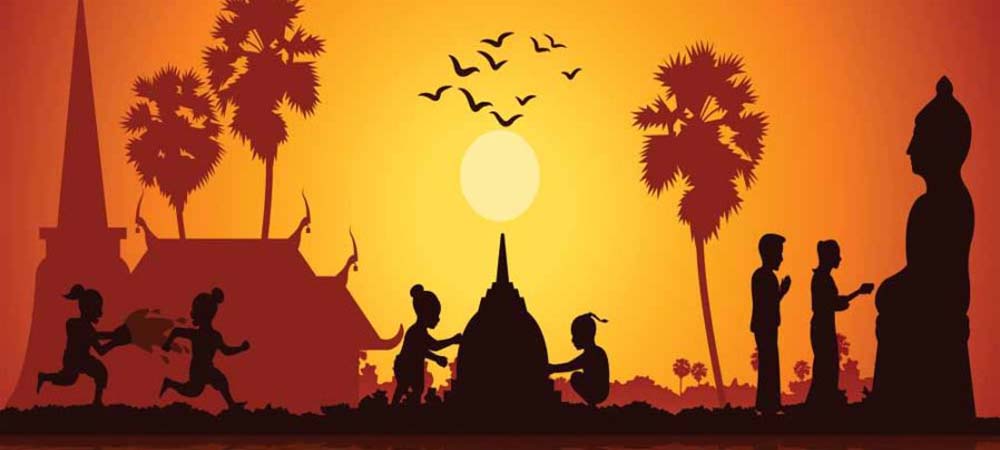Known for its stunning temples of Phnom Penh near Siem Reap, Cambodia is one of the most popular countries in South East Asia for visitors from all around the world. Not only this, but it’s got stretches of gorgeous coastline and seemingly untouched islands off its southern coast, just adding to the intrigue and interest that this unique and gorgeous country arouses in those who venture here.
Unfortunately though, Cambodia also has an extremely dark history, mainly in part to the brutal and bloody regime of the Khmer Rouge which lasted from 1975 to 1979, during which it murdered millions of Cambodian people in cold blood. In fact, it’s believed that people of a certain age in Cambodia today (within about one to two generations) either have been directly affected themselves or know someone who was directly affected by the Cambodian Genocide of the mid to late seventies. The result has made discussing politics something of a discomfort for many Cambodians.
Traveling to Cambodia can be a daunting prospect for many given the history, but it doesn’t have to be. We’ve put together this useful guide to navigating the customs and traditions of Cambodia as well as some of the etiquette so you can be prepared for your trip to this unique, culturally rich and amazing country with Explorient on any of our Cambodian tours.
Cambodia – A Country of Contrasts
Cambodia is definitely a country of contrasts – as evidenced by its more modern capital of Phnom Penh – home to glass edged skyscrapers sometimes neighboring shantytowns to the coastal hippie villages along the beaches of the south, to the ancient capital of the Khmer Kingdom of Siem Reap. Throughout the country, you’ll experience a myriad of different traditions and customs when it comes to dining, religion, and life in general. Here are some of the most common ones you’re likely to run into when you explore this beautiful country on Explorient’s Mekong Delta Explorient tour.
Stay Cool
We don’t mean temperature-wise, although that is a good idea as well when the mercury soars in the summer months, sometimes breaking 45C. Staying cool in terms of your temper is integral to the concept of saving face. It’s absolutely unacceptable to lose your temper and yell or belittle people in public – as with many of Cambodia’s neighbors. Generally being brash and abrasive will lose you a lot of respect while being good-humored, kind and calm will get you the same in return. Here are some interesting (and easy!) ways to save face in Cambodia.
- When haggling, give a bit extra on the final price. You can also come back to the shop to purchase something later.
- Always politely refuse a gift in the first instance or two, but always accept in the end and receive it with both hands.
- Be sure to be genuine when giving compliments and deflect compliments toward you away from yourself to someone else. Above all, stay humble.
Hands, Feet, Heads
Like with other countries in the region, the feet are considered the dirtiest parts of the body and should not be pointed at anyone and care should be taken not to show the soles of your feet even accidentally to a person or point them toward a sacred place or statue, such as a temple or Buddha. This includes casually sitting down with your legs stretched out. When in doubt, you can cover your lower legs and feet with a scarf or sarong if you must sit this way, otherwise, preferred methods are cross-legged or on the knees if you’re able. The head is considered the most sacred and important part of the body as that’s where the soul or consciousness lives, and so touching anyone’s head – even children’s – should be avoided. In terms of hands, the left is considered dirty while the right is for eating and passing people things, however when giving or receiving things, it should be done with both hands.
The Past
While Cambodia has a somewhat sordid history that may incite curiosity from travelers, it’s advisable to avoid asking or talking about it outright to avoid upsetting anyone. For travelers who are curious about the Cambodian Genocide, you can visit places like the Killing Fields or S21 (Tuol Sleng), a former school-turned-prison in the center of Phnom Penh where the Khmer Rouge would torture and kill many innocent Cambodian people. You’ll visit Tuol Sleng and the Killing Fields on your visit to Cambodia on Explorient’s Cambodia Impressions tour, a visit you’ll be talking about for years to come.
Greetings
Like in Thailand with the wai, in Cambodia the traditional greeting is known as the som pas. They’re essentially the same, where you press your hands together in a prayer-like stance and bow slightly. Some Cambodians also opt for the western handshake, but it will be fairly soft and not a firm one like we usually expect in the west, so don’t be surprised to receive a limp handshake. The typical best response to a greeting by a Cambodian – whether it’s a handshake or the som pas – is to return the greeting in the same way… or at least in some way. Not returning a greeting in Cambodia is considered extremely rude.
Clothing
While many people may wear shorts in Cambodia, that’s about where the acceptance for western attire ends. Visitors should take care not to show too much skin or wear revealing clothing such as tight pants, leggings, yoga pants, short shorts, miniskirts and the like and also take care not to wear anything with religious symbolism – especially the Buddha – on it. Swimwear is fine at the beach, but save it for the beach. Clothing in the city should be respectful and cover shoulders and the like. In temples take care to cover shoulders and knees. Carry a scarf or sarong if necessary. It can get very hot in Cambodia, as with many surrounding countries, so covering up might seem counter-intuitive, but it can actually help protect you from the sun’s harsh rays and provide shade. Be sure to pack appropriately before your Angkor Wat Exploration tour with Explorient and include some longer clothes for comfort.
Monks
Conversing with monks is one of the most interesting things that you can experience while in South East Asia and many of them love to talk to foreigners and have an excellent grasp of English thanks to the very good education they get through their temples. The general rule of thumb is to follow the lead of the monk. If he is seated, sit before striking up a conversation and try to sit lower than they are. Women are permitted to talk to monks but should never pass them anything directly. Finally, monks do not eat in the afternoon, so take care not to consume food or drink when conversing with a monk out of respect.
Temples and Travel
When entering any temples, remove footwear and leave it outside. Follow the lead of everyone else – when you see a pile of shoes, it’s a good indication that your footwear should join those in the pile. Temples are sacred places so be sure to turn your phone on silent, removed headphones and respect the peace and serenity by not talking loudly, especially as there may be people meditating or praying. Ask before photographing anything, and never touch the statuary present or turn your back to the Buddha statue. Also always ensure you’re dressed appropriately for temple exploration – even Angkor Wat when you visit on the Indochina Explorient tour to experience these exquisite temples up close and personally.
There you have some of the finer points of Cambodian etiquette and customs to help prepare you for your adventure to this beautiful, warm and welcoming country. With a bit of information under your belt, you should be able to hit the ground running and enjoy all your excursions and adventures with Explorient on our Indochina Spectacular tour.





